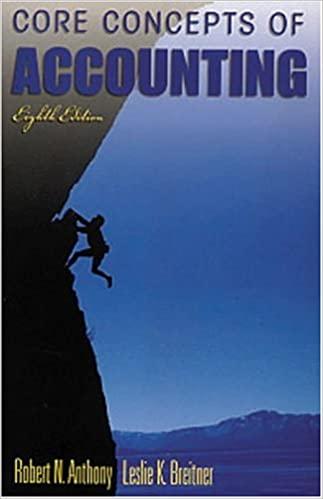Answered step by step
Verified Expert Solution
Question
1 Approved Answer
Laker Company reported the following January purchases and sales data for its only product. For specific identification, ending inventory consists of 250 units from the
Laker Company reported the following January purchases and sales data for its only product. For specific identification, ending inventory consists of 250 units from the January 30 purchase, 5 units from the January 20 purchase, and 20 units from beginning inventory. Date January 1 January 10 January 20 January 25 January 30 Activities Beginning inventory Sales Purchase Sales Purchase Totals Assume the perpetual inventory system is used. Required: Units Acquired at Cost 165 units @ $ 9.00 = 110 units @ $ 8.00 = $ 7.50 = 250 units @ 525 units $ 1,485 880 1,875 $ 4,240 Units sold at Retail 125 units @ 125 units 250 units @ $18.00 $ 18.00 1. Complete the table to determine the cost assigned to ending inventory and cost of goods sold using specific identification. 2. Determine the cost assigned to ending inventory and to cost of goods sold using weighted average. 3. Determine the cost assigned to ending inventory and to cost of goods sold using FIFO. 4. Determine the cost assigned to ending inventory and to cost of goods sold using LIFO.




Step by Step Solution
There are 3 Steps involved in it
Step: 1

Get Instant Access to Expert-Tailored Solutions
See step-by-step solutions with expert insights and AI powered tools for academic success
Step: 2

Step: 3

Ace Your Homework with AI
Get the answers you need in no time with our AI-driven, step-by-step assistance
Get Started


